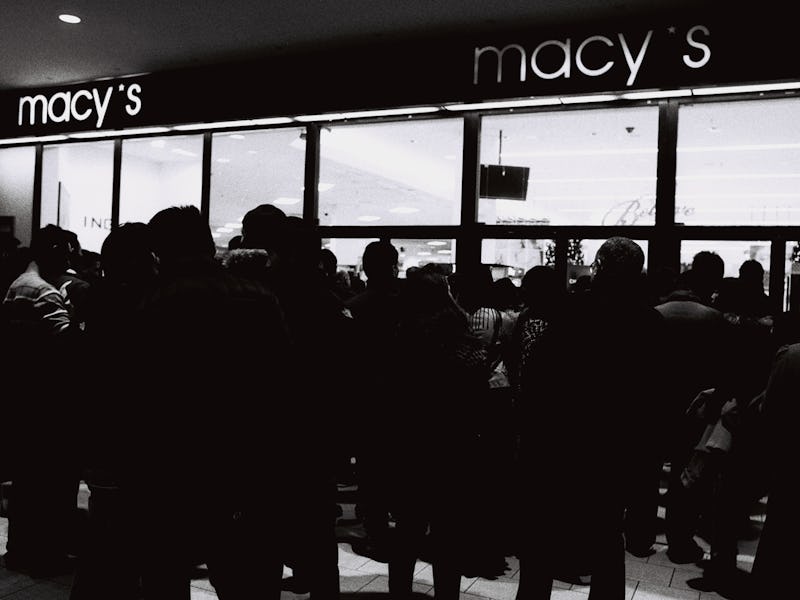Black Friday is designed to start the holiday retail season with both the definitiveness and subtlety of a gunshot. It is also — as a pseudo-holiday and a sales-based pricing strategy — designed to provide retailers with an opportunity to psyche out potential customers. In a recent article published in The Journal of Retailing, researchers sifted through 30 years of research and 66 studies to come up with a definitive list of psychological gambits associated with the post-Thanksgiving consumption-fest. And, no, most aren’t as straightforward as pricing goods at 99 cents instead of $1 or offering a “buy one, get one free” deals at markup. What the researchers found was that retailers rely on human biology to get you to buy things you don’t really need.
An example: Ever notice how Black Friday posters tend to be red, blue, or yellow? Not a coincidence or a subtle trend. “People feel more aroused when exposed to warm as compared to cool color schemes,” Holger Roschk, a professor in service management in Austria, explained to Inverse. “This may be for different reasons. Studies found that red caused physiological reactions like increased blood pressure for human behavior in general. People refer to warm colors (especially red) as arousing, exciting and distracting; cooler colors (especially blue) are described as relaxing, peaceful or calm.”
While the exact mechanism isn’t fully understood, it is clear that something about being in a store with bold walls gives people a shopping high. It’s no wonder then that Target plasters its walls in red, or that IKEA trademark blue and yellow have customers scooping up gadgets by the armful. That’s not to say cool colors can wave goodbye at being used in retail, though — Roschk and his colleagues found that while bold hues spiked up arousal, cooler colors brought more satisfaction. Big box retailers might like to splash every wall and surface with primary colors; jewelers use subtler tones on their walls to put their customers in the right headspace to spend. Breakfast at Tiffany’s, after all, is the calmest meal of the day.
The tricks aren’t limited to the visual. Retailers have scent strategies as well. As smell anthropologist Kara Hoover says, corporations are acutely aware of how smell is tied to their brand, from the trademark gooey Cinnabon smell to that bizarrely fresh linen scent greeting you at many hotels. Go to a mall on Black Friday and you’ll notice it absolutely wreaks of branding. You’ll also notice that it’s loud.
“We found that the presence — versus the absence — of music and scent showed a tendency toward stronger effects in service settings,” Roschk explains, adding that Hollister might be the brand that leans the most on scent. “It’s their strategy to darken the room, play loud music, and use cologne. For me, this is too much. For others, it’s just perfect. In the end, it’s really just another way to advertise.”
This is most important for establishments selling something intangible: Think travel agencies or, in a funny way, lingerie shops. When the focus is on service and the emotional reaction to a product rather than the product itself, retail adopts aural strategies normally associated more with the service industry, piping in emotionally evocative music to pair with specific smells designed to put customers at ease. The floral bouquet in a Victoria’s secret gets paired with rhythmic pop in the same way the smell of sizzling fat gets paired with top-40 at Applebee’s. People are more easily sold on comfort than they are on food or durables.
“From a theoretical perspective, this makes sense,” Roschk said. “The logic is basically that you don’t know what to get or what to expect from the service since you can’t inspect it before trying it [the product or service]. Therefore, you are looking for other information cues in the environment. Atmospheric stimuli like music or scent help.”
